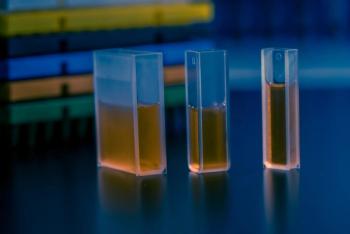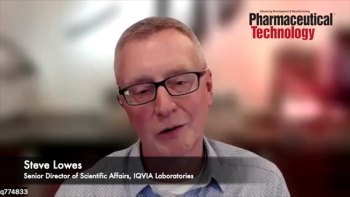
- Pharmaceutical Technology-06-02-2017
- Volume 41
- Issue 6
Do You Listen to What Your Data are Telling You?
This column presents a data case study of a laboratory refrigerator and its qualification performance over five days, with important lessons for using average and individual results, as well as user requirements.
Some years ago, the analytical laboratory in a small pharmaceutical company used a domestic refrigerator to store standard solutions for high-performance liquid chromatography (HPLC) analyses. The laboratory head decided that the temperature of the refrigerator was to be recorded manually twice a day using a mercury in glass thermometer positioned on the middle shelf. As this refrigerator lacked formal qualification documentation as required by United States Pharmacopeia (USP) General Chapter <1058>, however, the laboratory head requested that it be temperature mapped over a working week. The acceptance criteria to be adopted was that the mean temperature was to comply with the USP requirements of 2 °C to 8 °C. Recognizing that twice-a-day monitoring was probably insufficient for qualification, the laboratory head decided that the average temperature over two hourly intervals on the middle shelf would be used to generate the data over 60 hours of routine operation.
Average temperature over two hourly intervals
To capture the data, certified and calibrated data loggers were used with an accuracy of better than ±0.3 °C, which was considered sufficient for the qualification. The average temperature over two hourly intervals on the middle shelf from the qualification run is shown in Figure 1.
Noting that the acceptance criteria were 2 °C to 8 °C, the data logger two-hourly means were rounded to a single significant figure. However, 10 of the 30 averages were identified as failures and an investigation was undertaken.
Fortunately, there were also data loggers on the top and bottom shelves in order to map the operational volume of the refrigerator. When these data were reviewed in the same manner as the middle shelf, a more interesting picture emerged as shown in Figure 2.
All the points on the top shelf except two meet the acceptance criteria and all the points on the bottom shelf except two fail the acceptance criteria. At this point, the laboratory head mentioned that they did sometimes find solutions that had frozen.
The data loggers used had the data storage capacity to record the temperature every 4.8 minutes and Figure 2 could be updated to include the maximum and minimum temperatures for each of the two hourly means (Figure 3).
The temperature range over the five days was a high of 12.6 °C and a low of -6.0 °C. Hence, there is demonstrable lack of control.
Even more instructive is to simply trend the 1500 individual readings (Figure 4). The thermostatic control is so poor that cycles of 10 °C are not uncommon, which is more than the USP specification range. In addition, the lack of air circulation creates a large temperature difference between the top and bottom shelves.
Conclusion
This example gives rise to some important learning points:
- Always carefully consider whether individual readings or means are appropriate for setting acceptance criteria. Note that on many occasions both are appropriate.
- Always plot the trend of individual readings to see evidence of time-related phenomena.
- Always consider the frequency of measurement of data loggers in the context of actual use.
- Always consider the positioning of data loggers in the context of actual use.
- Never purchase a piece of equipment that was not designed to perform to specific user requirements.
Remember that a domestic refrigerator is not designed to control an environment to meet USP standards of 2 °C to 8 °C.
Article Details
Pharmaceutical Technology
Vol. 41, No. 6
June 2017
Pages: 54-55
Citation
When referring to this article, please cite it as C. Burgess, "Do You Listen to What Your Data are Telling You?," Pharmaceutical Technology 41 (6) 2017.
Articles in this issue
over 8 years ago
Control Box Connects Lab Sensors and Pumpsover 8 years ago
Planetary Dispersers with PLC Recipe Controlsover 8 years ago
Paperless Recorder Shortens Sampling Intervalsover 8 years ago
Sterilizer Uses Pulsed Light Technologyover 8 years ago
Boosting Bioproduction Workflows with Automation Technologiesover 8 years ago
Decoding Serialization Regulationsover 8 years ago
Synchronizing Anticounterfeiting Effortsover 8 years ago
New and Updated Laboratory Equipment Optimize Efficiencyover 8 years ago
Understanding Dissolution Testingover 8 years ago
Particle Size Reduction for Investigational New DrugsNewsletter
Get the essential updates shaping the future of pharma manufacturing and compliance—subscribe today to Pharmaceutical Technology and never miss a breakthrough.



